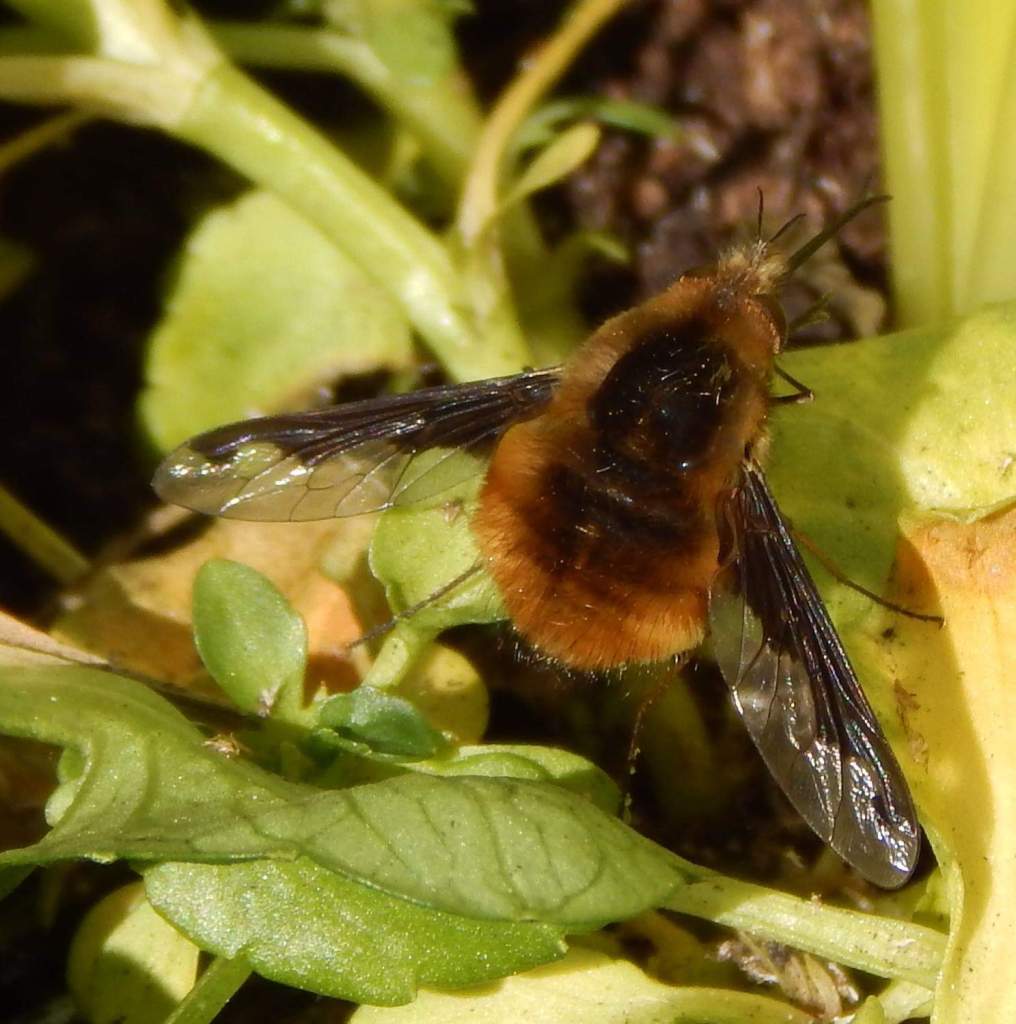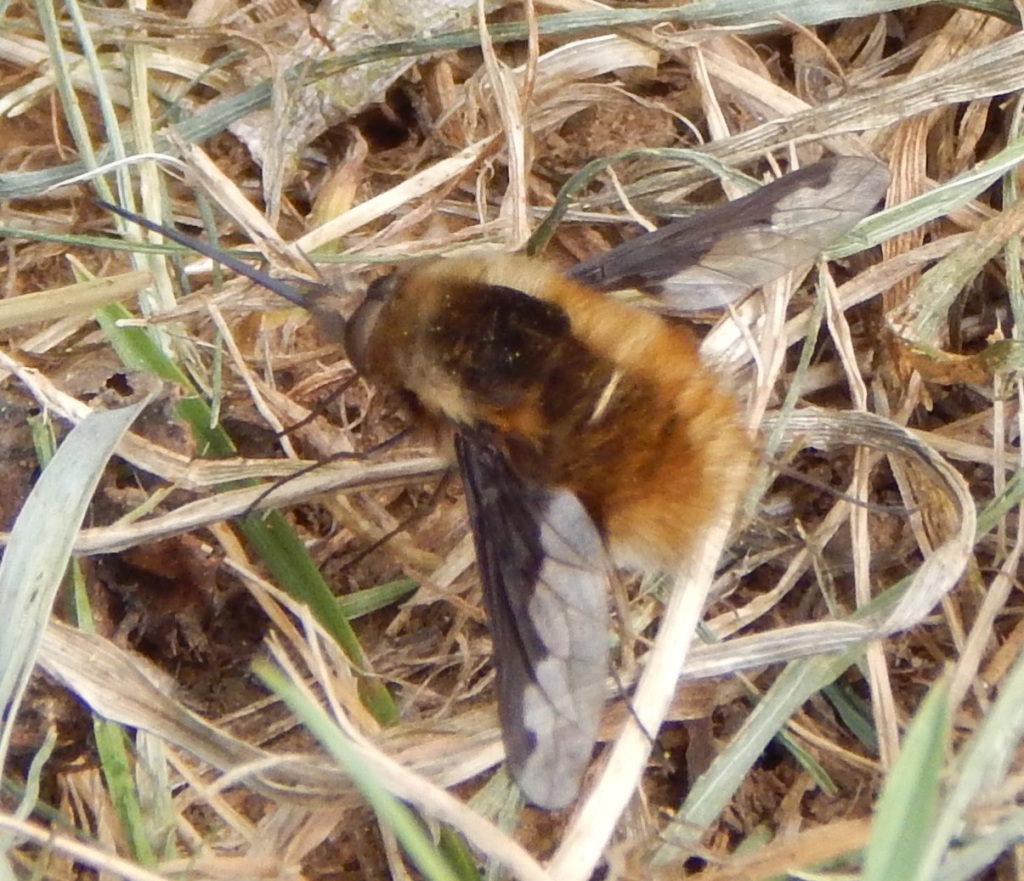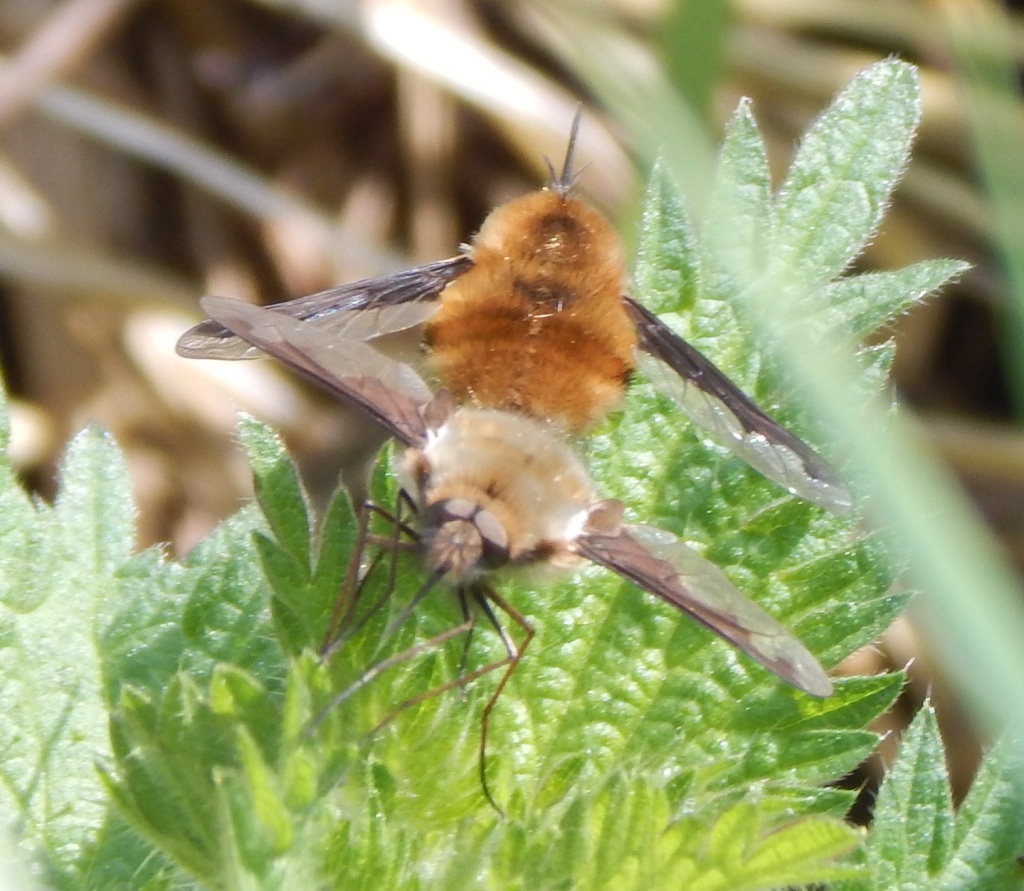
[053] Bombylius major, Bee Fly
Introduction
Bombylius major, the Bee Fly, is a medium sized fly, superficially resembling a bumble bee.
We have the usual problem. As there are about 5 000 species in the Bee Fly family, we have to be a bit more specific. It’s the Large Bee-fly or Dark-edged Bee-fly. There are one or two other bee flies (or bee-flies) that are seen very rarely in Britain but this one is usually just known as the Bee Fly.
Taxonomy
Kingdom – Animals
Phylum – Arthropods
Class – Insects
Order – Diptera
Suborder – Brachycera
Superfamily – Asiloidea
Family – Bombyliidae
Subfamily – Bombiliinae
Genus – Bombylius
Scientific Name – Bombylius Major
Name
Bombilius presumably comes from Bombus, the Bumble Bee genus.
Flies
This is our first fly, one of about a million species. The Order Diptera is named (‘two-wings’) from the wing structure of flies. They only have one pair of wings with which they fly. The other pair are modified into tiny ‘halteres,’ which act like gyroscopes and enable aerobatic manoeuvring in flight.
Flies are diverse and include craneflies, horse flies, hoverflies, house flies, flesh flies, gnats, mosquitos and midges. They are fully metabolous and generally have good eyesight.
Bombyliidae
Just to give you an idea of numbers, there are about 200 families of flies and Bombyliidae has 5 000 species in hundreds of genera, mostly called bee flies. They vary in size but all are parasitic and host specific. 450 species come under the genus Bombylius.
Description
The body of the Bee Fly is dark but it covered in hairs which make it look a light brown. Its wings are dark at the front and light towards the rear with an undulating border. It has long legs that dangle in flight and a very long proboscis that it uses to extract nectar from flowers. It often hovers in flight.


The adult flies are seen from April to June. They have several host species including [024] the Mining Bees (and other solitary bees and wasps.) The female fly hovers over the bee’s open nest and flicks her eggs into it.
The larvae are hypermetamorphic parasitoids, which feed on the stored food and the young bees. This means that the first instar is a mobile form seeking out the food source for the main development.
Sometimes the female fly lays her eggs on the flowers visited by the host species. Developing larvae then find a nest or attach themselves to the bee to be carried there.
Large numbers of eggs are laid as few survive to find a host. When the larva does find a host larva it holds on tightly as it eats it. The pupa overwinters.
Habitat
Bombylius major is found in temperate Europe and North America and some parts of Asia.
Other Notes
I have seen them in my garden. I have also seen them among a large number of mining bees making their nests.

See also
If you are feeling sorry for the bees, wait for [237] Nomad Bees.
